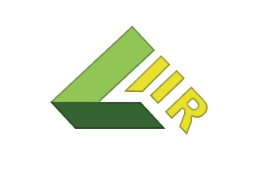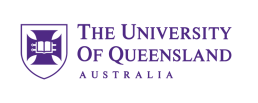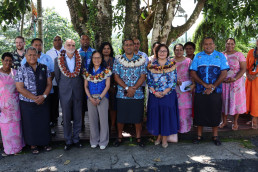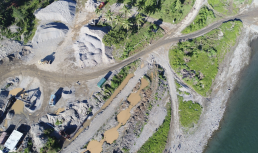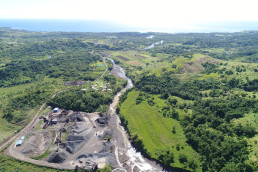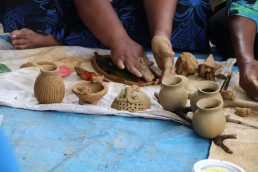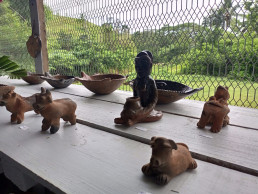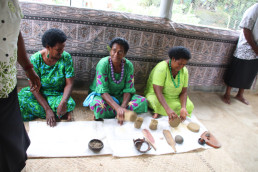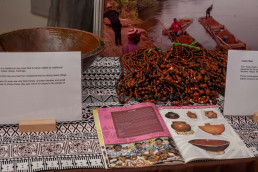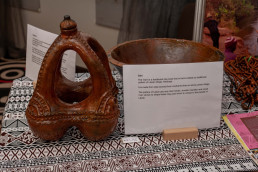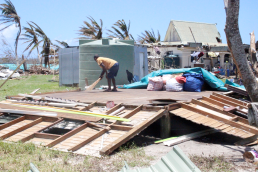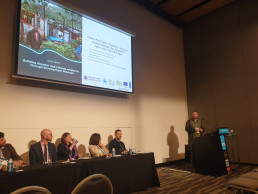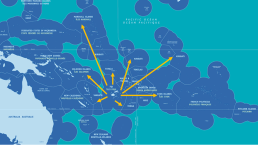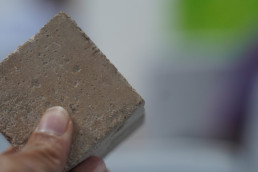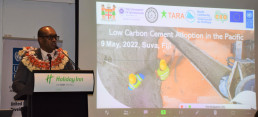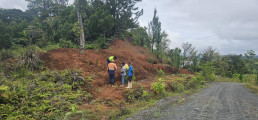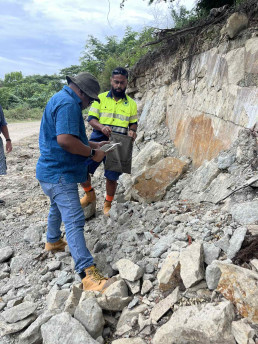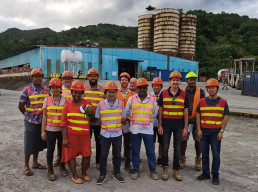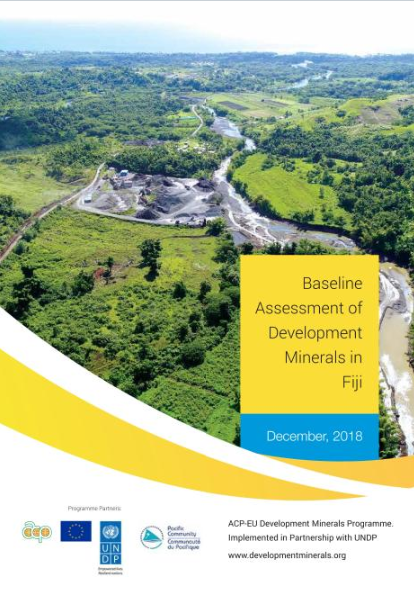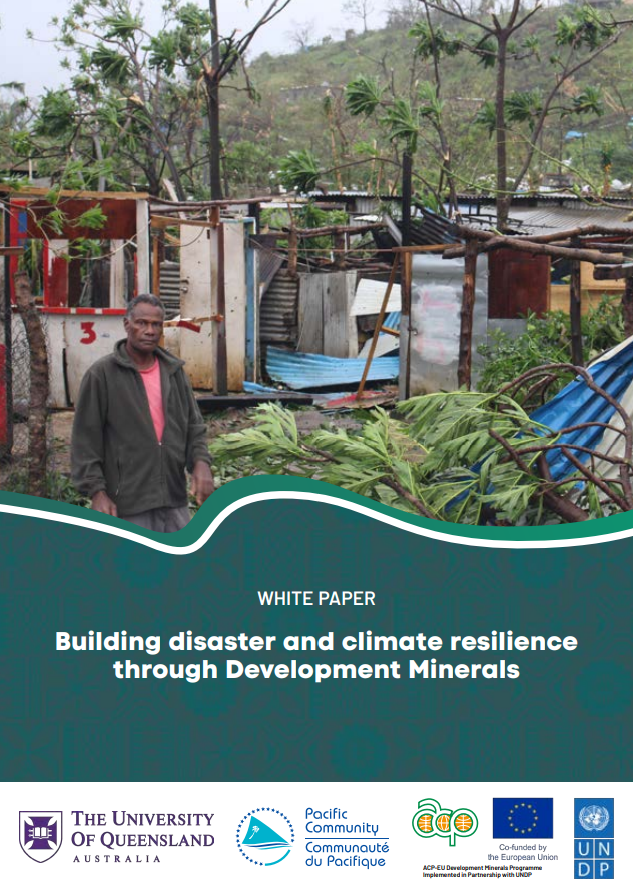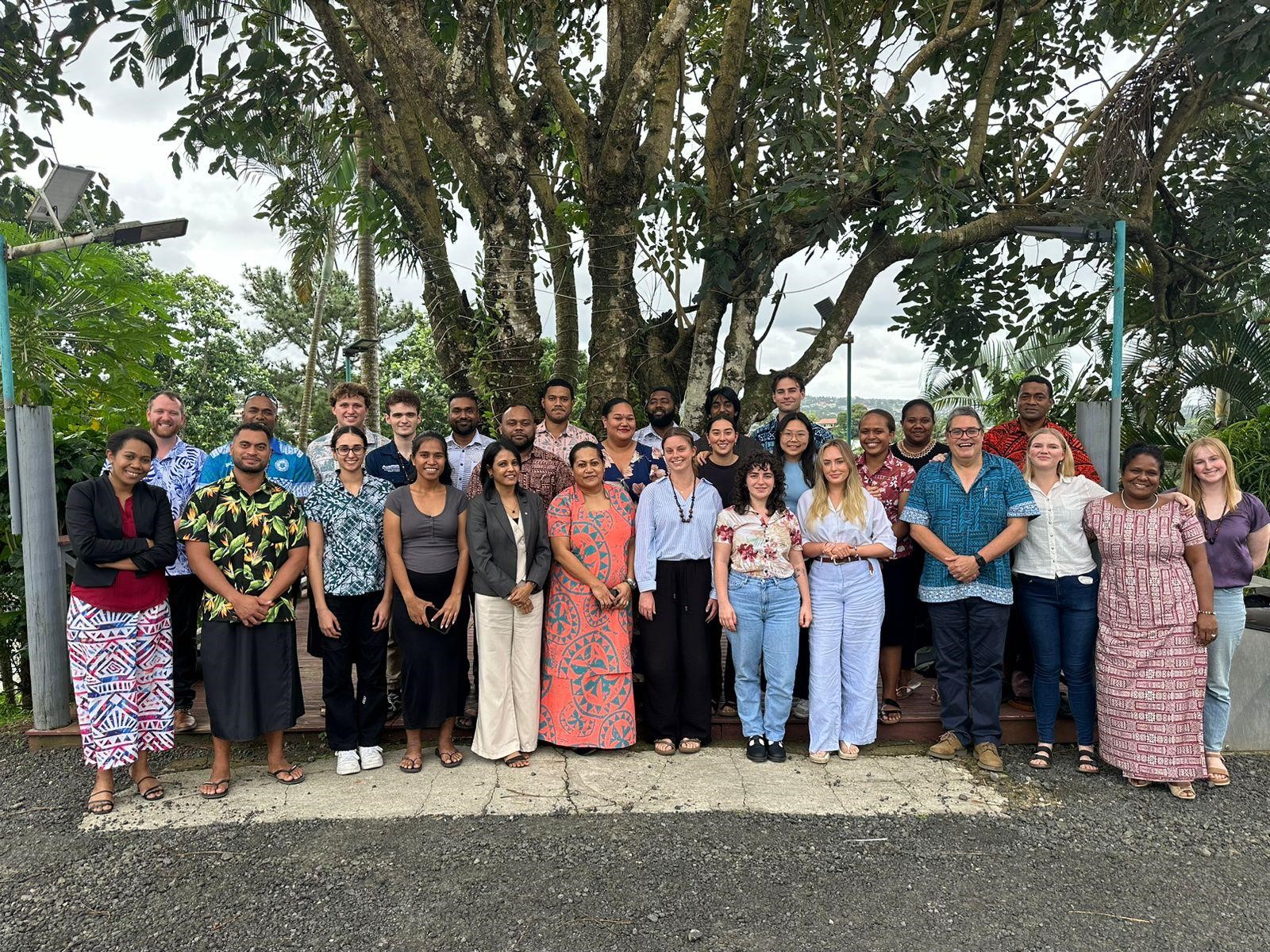FIJI

Located in the South Pacific Ocean, Fiji is an archipelago composed of over 300 islands. Its geological diversity is the source of many minerals, which are the lifeline of Fiji’s infrastructure, construction, and economic development, as well as its cultural heritage and sustenance of its craftspeople. Moreover, several other Pacific islands depend on Fiji for supply of quarry materials.
Development Minerals in Fiji
Development Minerals such as sand, gravel, limestone and quarried stone play a central role in Fiji’s economy and development. These minerals are crucial for various sectors, including housing, construction, manufacturing, and agriculture. They are also critical for disaster and climate resilience.
The demand for Development Minerals in Fiji is steadily increasing, driven by infrastructure projects and disaster recovery efforts.
Fiji has many opportunities for establishing new mineral-based industries. These include cement production from local resources, industrial lime manufacturing, ceramics production using residual clays, clay brick production, glass production from silica sand, industrial salt production, and phosphate mining.
However, challenges such as environmental concerns, social impacts, and a lack of investment remain. The government is committed to addressing these issues by promoting sustainable sourcing of minerals, sustainable mining practices and exploring opportunities for new mineral-based industries like low-carbon cement.
Development Minerals play a central role in Fiji’s economy and development
~ USD130 million
direct contribution to Fiji’s GDP
95%
of companies are domestically owned SMEs
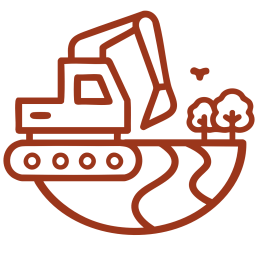
76%
of regulated extraction sites are in rivers
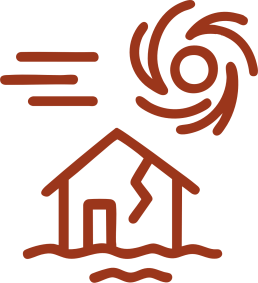
~USD 1.3 billion
damage from Cyclone Winston
15%
percent of homes in Fiji were destroyed and or damaged, requiring extensive reconstruction
350 000
people affected
OUR WORK IN FIJI

A major focus of the Programme in Fiji currently is the Blue Concrete Initiative, a collaborative effort with the Fiji Government, SPC, University of Queensland (Australia), Society for Technology and Action for Rural Advancement (TARA) in Delhi India, and other key stakeholders. The initiative will lay the foundations for the introduction of low-carbon cement to Fiji and ensure that key minerals needed in making concrete are sourced in a way that is both sustainable and builds resilient local supply chains.
The Programme has worked with these partners and other key stakeholders by providing capacity building and conducting applied research in areas such as mining and geology, environmental management, and disaster risk prevention. It has also supported the digitization of geological data, enabling better land use and resource management, more efficient exploration, and improved environmental monitoring.
KNOWLEDGE, INFORMATION AND DATA
Put Development Minerals in the spotlight and contributed to improved mineral resource management by:
- Conducting a baseline study on Development Minerals
- Supporting the development of the national strategy and policy on Development Minerals to promote growth in the sector
- Strengthening official statistics on the mining and quarrying sector’s contribution to Fiji’s GDP by developing new methodology and facilitating inter-agency collaboration
- Helping digitize geological data for integrated mineral resource and land management by setting up a Digital Library of Geodata
- Contributing to professional development in mining by helping establish the Certificate IV course in Geology, Mining and Quarrying at the Fiji National University
ENVIRONMENTAL, SOCIAL AND CLIMATE-CHANGE SAFEGUARDS
Promoted legal, more sustainable and climate-resilient mining practices by:
- Supporting development of guidelines for sustainable extraction of sand and gravel
- Helping develop and test advanced digital tools for detection of mining sites
- Conducting research on the role of Development Minerals in Fiji in disaster- and climate-resilience
VALUE-ADDITION
Promoting value-addition by fostering both innovation and tradition by:
- Promoting production of low-carbon construction materials through fostering innovation and research in low-carbon cement
- Supporting indigenous practices doing value addition to Development Minerals and preservation of cultural heritage, practiced by artisanal pottery-makers and sea salt-makers
FOCUS AREAS
VALUE ADDITION AND LOW-CARBON MATERIALS
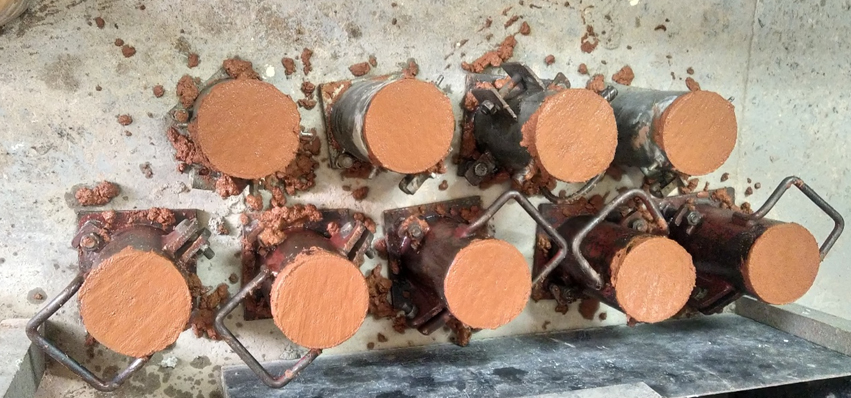
Photo credit: University of Queensland
LOW-CARBON MATERIALS
Blue Concrete Initiative: Low-Carbon Concrete for Blue Pacific
Pacific Islanders face rising sea levels and extreme weather. Traditional homes are unable to withstand more frequent and stronger cyclones. Resilience to natural disasters requires stronger and more durable buildings, made from materials such as concrete – where cement is the main ingredient. However, conventional cement used in construction in Fiji is imported and expensive. It is also a major polluter.
To climate resilience of Fiji, the Programme is supporting the country in adopting limestone calcined clay cement (LC3), a type of low-carbon cement, which can be produced in Fiji using locally available minerals. This innovative technology reduces CO2 emissions by up to 40%, cuts reliance on costly imports, reduces the cost of construction and creates local jobs. The technology has applications far beyond Fiji.
The Programme developed the Blue Concrete Initiative in partnership with the Government of Fiji, the Pacific Community (SPC), the University of Queensland, the Indian Institute of Technology Delhi (IITD), and Technology and Action for Rural Advancement (TARA), as well as other key stakeholders. The Blue Concrete Initiative was initiated in November 2022 and officially launched by Fiji’s ambassador to the UN at COP 27 in Sharm El-Sheikh, Egypt.
The initiative works by supporting Fijian businesses and the government to transition from production of carbon-intensive, imported cement to low-carbon cement (LC3) produced from local materials in Fiji.
As part of this initiative, technical and financial feasibility of low-carbon cement, as well as its comparison with conventional cement in terms of technical characteristics and carbon emissions are being tested. The initiative works to translate research and analysis into commercial application.
A roadmap for commercialization of LC3:
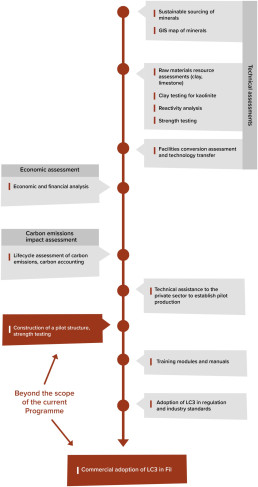
Circular Economy and Responsible Sourcing of Raw Materials
The Programme in Fiji will also be working to foster circular economy and responsible practices in the sourcing of raw materials for cement and concrete production. This includes the use of waste materials from quarries and by-products of mining of critical minerals for production of cement (ore-sand).
Enabling Environment

L-R in the first row: Ms Litia Takalaiyale, Principal Officer, Geo-Science Division, MRD; Dr Raijeli Taga, former Permanent Secretary, MLMR; Mr Maurizio Cian, Head of Cooperation, EU Delegation; Ms Ngedikes Olai Uludong, Deputy Director of Geo-Resources and Energy, SPC; Mr Filimoni Vosarogo, Honorable Minister for Lands and Mineral Resources; Ms Munkhtuya Altangerel, UNDP Resident Representative; and other stakeholders.
Photo credit: Fiji Mineral Resource Department
POLICIES AND INSTITUTIONS
The Programme assisted the Government of Fiji in strengthening laws, policies, and institutions to foster a more sustainable and responsible mining sector. This involves contributing to policy frameworks, promoting interagency coordination, and addressing land-related issues by engaging relevant stakeholders and considering traditional rights crucial for ensuring sustainable and responsible mineral development. In collaboration with the Pacific Community (SPC), the Programme provides technical assistance to the Ministry of Lands and Mineral Resources in developing key policy documents and guidelines:
- National Development Minerals Policy: The Programme contributed to the formulation of the National Development Minerals Policy to address various aspects of mineral development, ensuring effective coordination among sector agencies for sustainable mineral extraction.
- Construction Materials Damage and Capacity Assessments: Supported the Ministry of Lands and Mineral Resources to undertake construction materials damage and capacity assessments to assist in the recovery following Tropical Cyclone Yasa that caused large-scale damage in Fiji in December 2020.
- Capturing the value of Development Minerals in official statistics: The Programme worked with the Mineral Resources Department, SPC, Department of Lands, Itaukei Trust Board and the Fiji Bureau of Statistics to improve the coverage of Fiji’s Development Minerals sector. It increased the number of recorded quarries from 18 to 200. Relevant support was provided to institutional stakeholders to design and implement an improved process to ensure the true value of the sector is better reflected in official statistics. Increased coverage enhances understanding of the sector’s role in resilience and provides a stronger foundation for evidence-based policymaking in Fiji.
GEOLOGICAL AND MINERAL INFORMATION
The Programme assisted the Fiji Mineral Resources Department (MRD) in enhancing its management of Development Minerals data by modernizing the MRD’s data management practices, leading to better resource planning, reduced conflicts, and improved regional cooperation.
Challenges Addressed:
-
- A significant amount of valuable geological data existed in paper format
- Separate data on land use, geology and mineral resources hindered effective planning
- Poor data management led to conflicting land uses between and settlements and potential quarries
What was done:
-
- Examined and updated the Mineral Resource Department (MRD)’s existing geodata policy
- Established a government hosted online digital library for easy access to geodata.
- Equipped the MRD with tools − hardware and software − to convert paper records into digital format
Expected Benefits:
-
- Enhanced planning and management of Development Minerals, particularly sand and gravel, that are crucial for construction
- Better integration of mineral resource data with land use planning to prevent conflicts between settlements and quarries
- Increased capacity to supply other Pacific Island nations with limited quarrying resources
DIGITIZATION
Digital Library of Geodata
In collaboration with the Mineral Resources Department and the SPC, the Programme has developed a Digital Library of geodata and equipped the MRD with tools to digitize existing paper records. This initiative aims to improve the management of mineral resources, particularly sand and gravel, crucial for construction and regional support. By digitizing data and integrating information from various sources, Fiji is better equipped to plan the use of its mineral resources sustainably and supply to other Pacific Island nations. Conversion of valuable pre-digital records through the digital geodata library addresses the limitations of separate land use, geological, and mineral resource data and facilitates integrated planning and prevents issues such as settlements being built on potential quarry sites.
Mining Monitoring Tool
In collaboration with the SPC, the Programme has developed a groundbreaking mining monitoring tool for Fiji. This tool, developed as part of the Digital Earth Pacific initiative, utilizes satellite imagery and machine learning to detect illegal mining sites.
Mining Monitoring Tool:
-
- Effectively detects illegal mining activities by analyzing various indicators like turbidity, bare earth, and vegetation loss
- Detects both river and terrestrial extraction sites with high probability
- Accuracy is validated by successful ground-truthing
CAPACITY DEVELOPMENT

Photo credit: Secretariat of the Pacific Community (SPC)
The Programme has worked to build Fijian and Pacific regional capacities, in partnership with the University of Queensland’s Sustainable Minerals Institute, UNESCO, Secretariat of the Pacific Community (SPC), the Fiji Ministry of Lands and Mineral Resources, and Fiji National University (FNU) to set up and conduct training programs in geology, mining and quarrying.
Certificate IV in Geology, Mining and Quarrying course
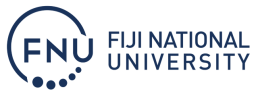
-
- Developed a year-long course for enhancing skills in mining and quarrying
- The program commenced in 2018 with an initial enrollment of 25 students, marking a significant step towards building a competent workforce in Fiji’s geology, mining, and quarrying sectors
- Gives recognition to mining and quarrying as major source of rural employment
- Aims to empower local communities by equipping them with the knowledge and skills necessary to sustainably manage their natural resources
“Stones for Development” course
In 2024, 4 Fiji students, 4 Pacific Islanders and 10 Australian participants including government officials participated in the Stones for Development training that involved student in projects on sustainable aggregate sourcing.
-
- Participants engaged in a two-week field placement in Fiji, collaborating with local partners to address real-world challenges related to Development Minerals
- The program emphasized understanding the intersection of geology, environmental science, and socio-economic factors in the context of sustainable development
- By enrolling students and early-career professionals from the Pacific region and Australia, the program fostered knowledge exchange and skill development in sustainable resource management
MINING AND QUARRY SECTOR
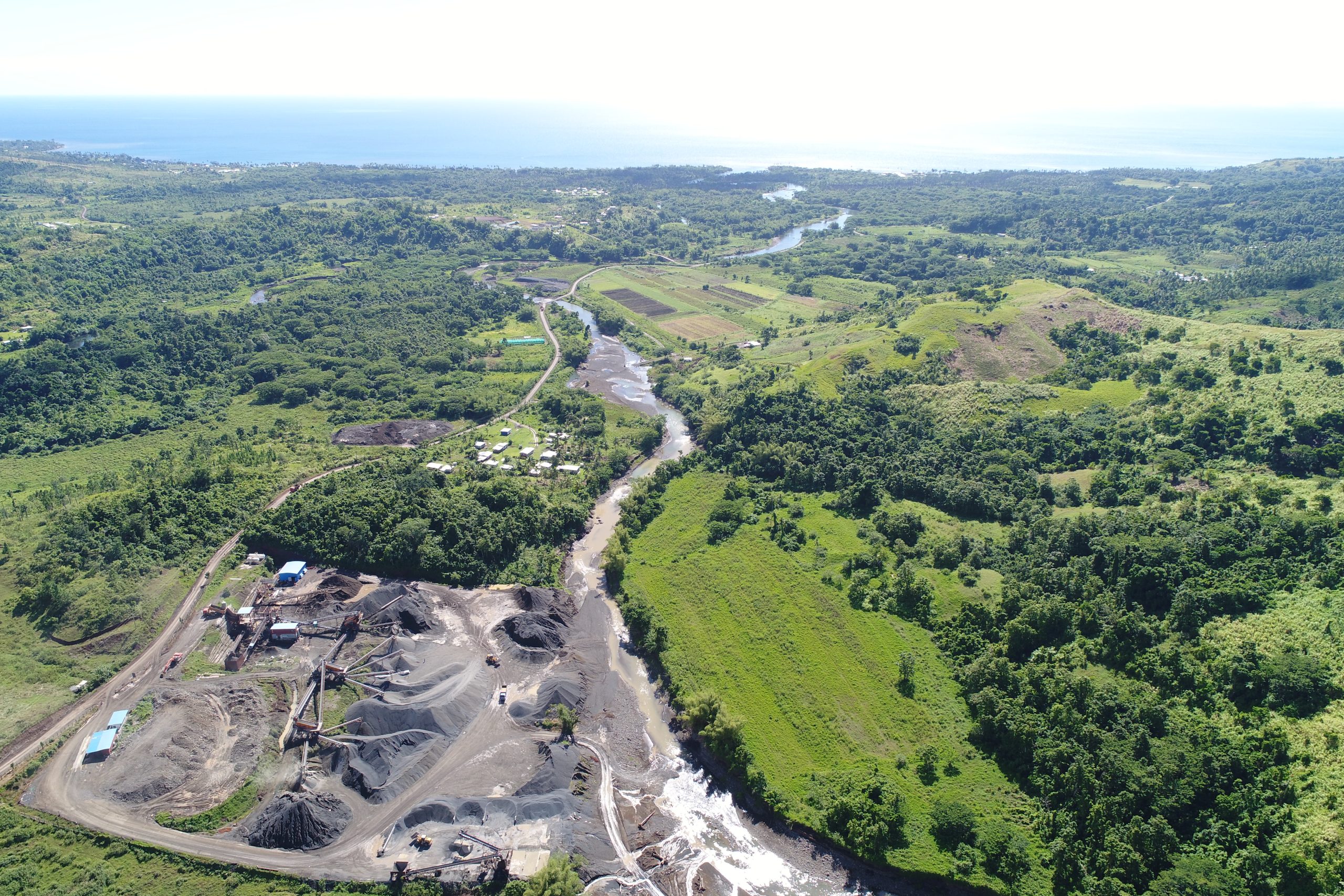
Photo credit: Secretariat of the Pacific Community (SPC)
ENVIRONMENTAL, SOCIAL, GOVERNANCE AND SAFETY PRACTICES
River Gravel and Sand Extraction Guideline
The Programme conducted an assessment of the environmental impact of river gravel and sand extraction, including both regulated operations and informal or illegal extraction and developed a guideline on sustainable extraction of river gravel and sand.
This guideline fills the gaps found in the Auditor General’s report issued in 2022, especially the lack of control over gravel and sand removal (as it is not currently overseen by the Mineral Resources Department), and the need for balance between using minerals for development and protecting the environment and communities. The guideline provides a reference for educating communities on efficiently managing gravel and sand extraction, better regulations, and environmental safeguards, while ensuring compliance with existing laws.

The aim of the guideline is to:
-
- Improve the environmental management of quarrying
- Improve monitoring of extraction, promote sustainable exploitation
- Improve environmental impact assessment reports (EIAs)
- Promote coordination between regulatory bodies
- Incentivize compliant quarries
- Improve monitoring and long-term sustainability of the sector
- Preserve environmental integrity of gravel and sand resources
It contains comprehensive guidelines for gravel and sand extraction such as:
-
- Information on gravel and sand sources, extraction processes, and their impact on rivers
- Fiji’s existing legal and administrative rules for extraction
- Principles and procedures for minimizing environmental harm during extraction
Building Disaster- and Climate Resilience through Development Minerals
In partnership with the UQ, SPC and MRD, the Programme conducted research on disaster and climate resilience through Development Minerals. The white paper argues that locally sourced construction materials are essential for disaster preparedness, resilience and recovery and recommends tools and frameworks to improve the governance of the Development Minerals sector, to ultimately enhance disaster preparedness and climate resilience.
BUSINESS AND VALUE CHAIN DEVELOPMENT

Photo credit: Fiji Arts Council
ENTREPRENEURSHIP AND BUSINESS DEVELOPMENT
The Programme has supported the revitalization of traditional crafts, empowered women artisans, and enhanced the resilience of local communities in Fiji. It supported village-based groups of artisanal salt-makers and clay potters through small grants in partnership with the Fiji Arts Council. This initiative demonstrates the successful use of small grants to support local artisans, rebuild livelihoods after a natural disaster, and revitalize traditional crafts in Fiji.

10
Villages with artisans-makers of traditional pottery and salt received grants

Reconstructed cyclone-damaged cooking houses for salt-makers and clay potters in several villages, improving safety and resilience

Provided essential equipment to support production
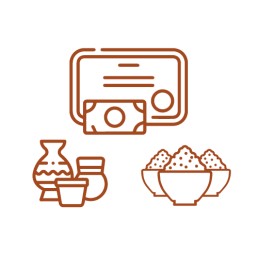
Enhanced community livelihoods and revived traditional crafts

Supported economic recovery for artisans impacted by the Tropical Cyclone Yasa and COVID-19
Raised the profile of the Fiji Arts Council, leading to further funding and capacity-building opportunities
EMPOWERING WOMEN ARTISANS
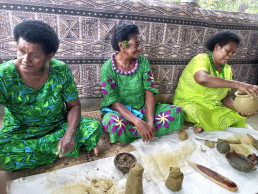
Photo credit: ACP-EU Development Minerals Programme
Traditional economic activities in Fiji that make use of Development Minerals such as clay and salt are dominated by women. The small grants supported women-led traditional crafts in Fiji, contributing to economic recovery, community development, and the preservation of cultural heritage.
71%
of direct beneficiaries of small grants were women
600
artisanal craftswomen benefitted
Supported the revival of traditional crafts, community infrastructure development
Improved family livelihoods, including children’s education

MEDIA
Voices from the field
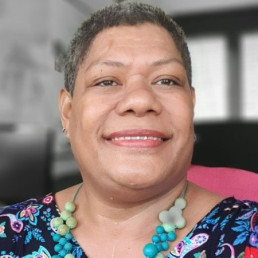
“This [Development Minerals] sector was initially determined as an undervalued and underestimated sector in terms of its contribution to the economy, to social needs and, also to the development sector of Fiji. When the first phase of this [ACP-EU Development Minerals]Programme was completed, then the true potential of this sector in Fiji was then understood. This has identified pathways of benefits to the country and its people.
”
This [Development Minerals] sector was initially determined as an undervalued and underestimated sector in terms of its contribution to the economy, to social needs and, also to the development sector of Fiji. When the first phase of this [ACP-EU Development Minerals]Programme was completed, then the true potential of this sector in Fiji was then understood. This has identified pathways of benefits to the country and its people.”
Dr Raijeli Taga
Permanent Secretary of Foreign Affairs, formerly Permanent Secretary of Lands and Mineral Resources

“The FNU programme has allowed me to connect to the Regulatory Department for the Mineral and Quarry Sector, I have been able to find employment and I have been able to understand how landowners benefit as resource owners.
”
The FNU programme has allowed me to connect to the Regulatory Department for the Mineral and Quarry Sector, I have been able to find employment and I have been able to understand how landowners benefit as resource owners.”
Mr Jofiliti Sucuvou
Officer, Mineral Resources Department of Fiji
Videos
Video: Blue Concrete Initiative
Photos
IN THE NEWS
- Pacific takes firm steps toward a low-carbon futureFiji
25 November 2022
Nature Portfolio - Fiji launches low-carbon cement initiative to crush costs and CO2 emissions in building materialsFiji
21 November 2022
ABC Pacific - UQ Partners with India and Fiji to bring low-carbon concrete to the PacificFiji
13 September 2022
University of Queensland website
RESOURCES
EVENTS
- There are no upcoming events.
- There are no upcoming events.
Latest Past Events
Stone for Development Work-Integrated Learning Program (now Mineral Security Masterclass)
Suva, FijiIn July 2024, geoscientists from Fiji, Kiribati, Solomon Islands, Tonga, Tuvalu, and Australia participated in the Stone for Development Work […]
Launch of the Digital Geodata Library
Suva, FijiIn partnership with the European Union (EU) in the Pacific and the Pacific Community (SPC) the Programme supported the Mineral […]

